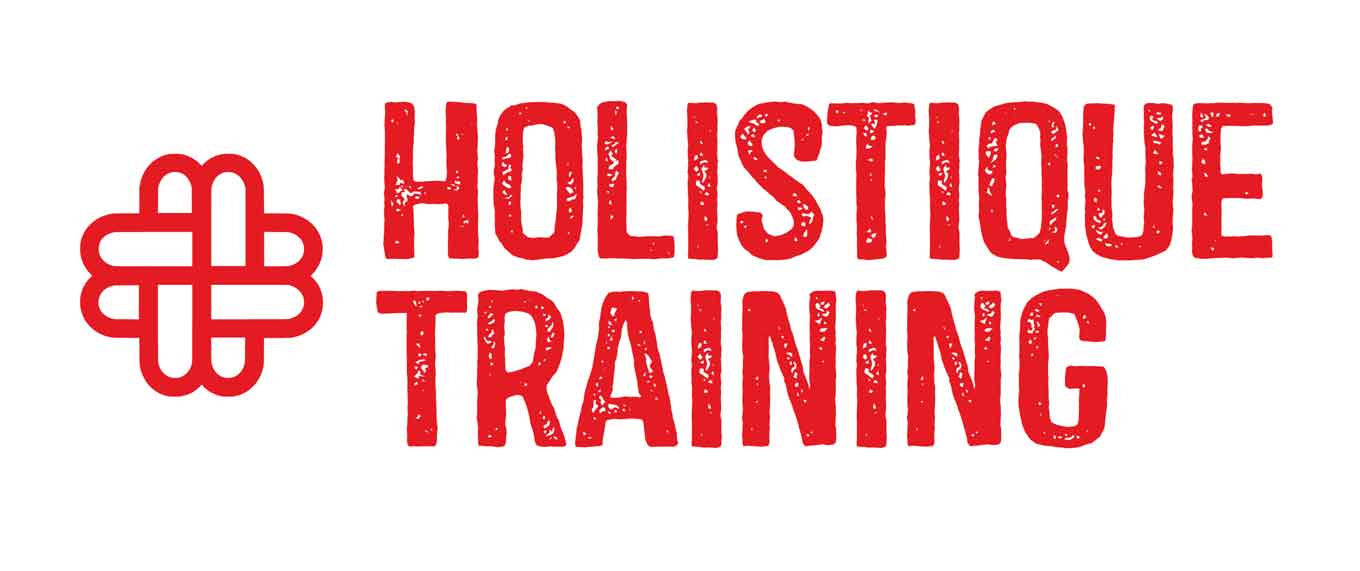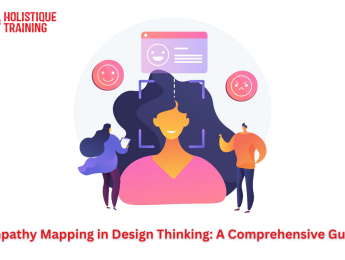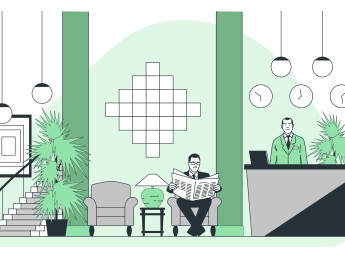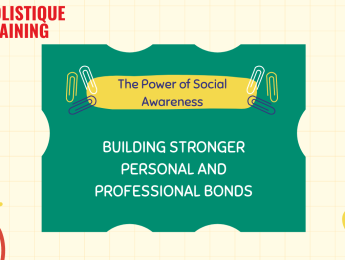- Table of Contents
- Introduction
- What is Design Thinking?
- Most Popular Design Thinking Models
- 1. Stanford d.school Model
- 2. Double Diamond Model
- 3. Human-Centered Design (HCD)
- 4. Lean UX
- What is Empathy Mapping?
- Empathy Mapping Elements
- Why is Empathy Mapping Important in Design Thinking?
- Enhances Understanding of Users
- Fosters Collaboration and Team Alignment
- Guides Decision-Making
- Identifies Pain Points and Opportunities
- Supports Iterative Design
- Encourages a User-Centric Culture
- Enhances Communication with Stakeholders
- How to Build an Empathy Map
- 1. Gather Data
- 2. Set Up the Empathy Map
- 3. Populate the Map
- 4. Identify Patterns
- 5. Discuss and Reflect
- 6. Iterate and Update
- 7. Use the Empathy Map in Design Decisions
- In What Areas is the Empathy Map Used?
- 1. Product Design and Development
- 2. User Experience (UX) Design
- 3. Marketing and Customer Experience
- 4. Service Design
- 5. Healthcare Design
- 6. Education and Learning Experience Design
- 7. Organizational Development and Change Management
- 8. Social Innovation and Community Development
- 9. Software Development and Agile Methodologies
- Conclusion
Introduction
Understanding the needs and experiences of users is essential in creating effective solutions. One powerful tool that enhances this understanding is empathy mapping, especially within the framework of design thinking. This blog post will explore the concept of empathy mapping, its significance in design thinking, and how it can be effectively utilized across various fields, including education, leadership, and user experience (UX) design. By the end of this exploration, readers will have a comprehensive understanding of empathy mapping and its transformative potential in design processes.
What is Design Thinking?
Design thinking is a human-centered approach to innovation and problem-solving that prioritizes the needs and experiences of users. It emphasizes collaboration, creativity, and iterative processes, allowing teams to develop solutions that are not only functional but also resonate with the people they serve. The design thinking process typically involves five key stages:
- Empathize: Understanding the users and their needs through observation and engagement.
- Define: Clearly articulating the problem based on insights gathered during the empathize stage.
- Ideate: Generating a wide range of ideas and solutions through brainstorming sessions.
- Prototype: Creating tangible representations of ideas to explore their feasibility and impact.
- Test: Gathering feedback on prototypes and refining solutions based on user responses.
This iterative process encourages teams to move back and forth between stages, allowing for continuous improvement and adaptation as new insights emerge. By focusing on the user experience, design thinking fosters innovation that is both impactful and relevant.
Most Popular Design Thinking Models
Design thinking has gained significant traction over the years, leading to the development of various models that provide structured approaches to the design process. Each model offers unique perspectives and methodologies, helping teams navigate complex problems while keeping the user at the center of their efforts. Here are some of the most popular design thinking models:
1. Stanford d.school Model
The Stanford d.school model is one of the most widely recognized frameworks for design thinking. It emphasizes a five-stage process: Empathize, Define, Ideate, Prototype, and Test.
- Empathize: This stage focuses on understanding the users and their needs through direct engagement, observation, and research. Techniques such as interviews and shadowing are commonly used to gather insights.
- Define: In this phase, teams synthesize the information collected during the empathize stage to articulate a clear problem statement. This step is crucial for ensuring that the design efforts are aligned with user needs.
- Ideate: Here, teams brainstorm a wide range of ideas and potential solutions. The goal is to encourage creativity and explore various possibilities without constraints.
- Prototype: This stage involves creating tangible representations of ideas, such as sketches, models, or digital mockups. Prototyping allows teams to explore how solutions might work in practice.
- Test: Finally, teams gather feedback on their prototypes from users. This iterative process helps refine solutions based on real user experiences and insights.
The flexibility of the Stanford d.school model encourages teams to move fluidly between stages, adapting their approach as new information emerges.
2. Double Diamond Model
Developed by the Design Council in the UK, the Double Diamond model visually represents the design process as two diamonds, each representing a distinct phase: the problem space and the solution space.
- Discover (First Diamond): This phase involves exploring and understanding the problem. Teams gather insights through research, user interviews, and observations, allowing them to define the core issues faced by users.
- Define: After gathering insights, teams refine their understanding of the problem and articulate a clear and concise problem statement.
- Develop (Second Diamond): This phase focuses on generating and developing ideas. Teams brainstorm potential solutions and create prototypes to explore the feasibility of their concepts.
- Deliver: The final stage involves testing the developed solutions with users and refining them based on feedback. This iterative process ensures that the final product meets user needs effectively.
The Double Diamond model emphasizes the importance of divergent and convergent thinking, encouraging teams to explore a wide range of ideas before narrowing down to the most promising solutions.
Design Thinking Method | Key Features | Ideal Use Cases |
Stanford d.school Method | Emphasizes empathy, ideation, prototyping, and testing. Focuses on user-centered design | Product design, UX design, education |
Double Diamond | Divided into four phases: Discover, Define, Develop, Deliver. Encourages divergent and convergent thinking | Service design, community projects, innovation strategy |
Lean UX | Integrates lean startup principles with design thinking. Focuses on rapid experimentation and feedback | Agile environments, software development, startups |
Human-Centered Design | Focuses on understanding the needs, contexts, and experiences of users. Involves iterative cycles of prototyping and testing | Social innovation, healthcare, community development |
3. Human-Centered Design (HCD)
Human-Centered Design, popularized by IDEO, places a strong emphasis on understanding the human experience. The HCD model consists of three main phases: Inspiration, Ideation, and Implementation.
- Inspiration: This phase involves immersing oneself in the user's world to gain deep insights. Techniques such as ethnographic research and co-creation sessions are employed to understand user needs and challenges.
- Ideation: In this phase, teams brainstorm and generate a variety of ideas based on the insights gathered during the inspiration phase. The focus is on creativity and collaboration, with an emphasis on exploring multiple solutions.
- Implementation: The final phase involves bringing ideas to life through prototyping and testing. Teams work closely with users to refine solutions based on feedback, ensuring that the final product aligns with user expectations.
The HCD model is particularly effective in fostering empathy and collaboration, encouraging teams to co-create solutions with users throughout the design process.
4. Lean UX
Lean UX is an approach that integrates design thinking principles with Lean Startup methodologies. It emphasizes rapid experimentation and iterative design to create user-centered products.
- Build-Measure-Learn: Lean UX follows a cycle where teams build a minimum viable product (MVP), measure its performance through user feedback, and learn from the results. This cycle encourages teams to make informed decisions based on real user interactions.
- Collaborative Design: Lean UX promotes cross-functional collaboration, bringing together designers, developers, and stakeholders to work collaboratively throughout the design process. This approach fosters a shared understanding of user needs and encourages collective problem-solving.
- Focus on Outcomes: Lean UX emphasizes achieving outcomes rather than delivering outputs. The goal is to create value for users by continuously iterating on designs based on user feedback and insights.
By combining design thinking with Lean principles, Lean UX enables teams to create user-centered solutions efficiently and effectively.
These design thinking models provide diverse approaches to problem-solving, each with its unique strengths and methodologies. Whether through the iterative cycles of the Stanford d.school model, the visual clarity of the Double Diamond, the empathetic focus of Human-Centered Design, or the rapid experimentation of Lean UX, these frameworks guide teams in creating innovative solutions that resonate with users. By understanding and applying these models, practitioners can enhance their design thinking processes and ultimately drive meaningful change in their respective fields.
What is Empathy Mapping?
Empathy mapping is a collaborative visualization tool that helps teams understand and articulate the thoughts, feelings, and behaviors of their target users. By creating a shared understanding of user experiences, empathy maps facilitate deeper insights into user needs, motivations, and pain points. This tool is particularly valuable in the early stages of the design thinking process, as it aligns team members around a common understanding of the user.
An empathy map typically consists of a large canvas divided into sections that capture different aspects of the user's experience. It serves as a focal point for discussions, brainstorming, and ideation, helping teams to synthesize qualitative research findings and identify key themes.
Empathy Mapping Elements
An empathy map is usually divided into four key elements: Says, Thinks, Feels, and Does. Each element provides a unique perspective on the user experience:
- Says:This section captures direct quotes or statements made by users during interviews or observations. It reflects the user's voice and provides insight into their opinions, desires, and concerns.
- Thinks:This element explores the user's thoughts and beliefs that may not be explicitly stated. It delves into what users might be thinking about a product or service, their motivations, and any assumptions they hold.
- Feels:Emotions play a crucial role in user experiences. This section captures the user's emotional responses, including frustrations, joys, and anxieties. Understanding these feelings helps teams empathize with users on a deeper level.
- Does:This part outlines the user's actions and behaviors. It describes how users interact with a product or service, including their habits, workflows, and the context in which they operate.
By analyzing these four elements, teams can gain a holistic view of the user experience, identifying opportunities for improvement and innovation.
Why is Empathy Mapping Important in Design Thinking?
Empathy mapping serves as a cornerstone of the design thinking process, playing a critical role in ensuring that solutions are user-centered and relevant. Its importance can be understood through several key aspects that highlight how empathy mapping enhances the design process and ultimately leads to better outcomes.
Enhances Understanding of Users
At the heart of design thinking is the goal of deeply understanding users and their experiences. Empathy mapping allows teams to synthesize qualitative data gathered through interviews, observations, and other research methods into a cohesive visual representation. By breaking down user experiences into the components of Says, Thinks, Feels, and Does, teams can gain a more nuanced understanding of users’ motivations, pain points, and behaviors. This comprehensive understanding is crucial for developing solutions that truly address user needs.
Fosters Collaboration and Team Alignment
Empathy maps serve as a shared reference point for team members, fostering collaboration and alignment throughout the design process. When team members contribute to building the empathy map, they bring diverse perspectives and insights to the table. This collaborative effort encourages open dialogue and helps to surface assumptions and biases that may exist within the team. As a result, empathy mapping creates a common language and understanding, ensuring that everyone is on the same page regarding user needs and experiences.
Guides Decision-Making
The insights derived from empathy mapping play a pivotal role in guiding decision-making throughout the design process. By grounding decisions in a well-rounded understanding of users, teams can prioritize features, functionalities, and design elements that align with user needs. For example, if an empathy map reveals that users are frustrated by a specific aspect of a product, teams can prioritize addressing that pain point in their design iterations. This user-centered approach ensures that the final product is not only functional but also resonates with users on an emotional level.
Identifies Pain Points and Opportunities
Empathy mapping helps teams identify critical pain points and areas of friction in the user experience. By capturing users’ feelings and frustrations, teams can pinpoint specific challenges that need to be addressed. This identification of pain points is essential for informing the ideation phase, as it allows teams to brainstorm solutions that alleviate user frustrations and enhance satisfaction. Furthermore, understanding users’ thoughts and desires can reveal opportunities for innovation, enabling teams to create solutions that exceed user expectations.
Supports Iterative Design
The iterative nature of design thinking is complemented by empathy mapping, which can be continuously updated as new insights emerge. As teams gather feedback from users during testing and prototyping phases, they can revisit and refine the empathy map to reflect evolving user needs. This dynamic approach ensures that the design process remains flexible and responsive to user feedback, leading to solutions that are continually optimized for user satisfaction.
Encourages a User-Centric Culture
Incorporating empathy mapping into the design process fosters a culture of user-centricity within organizations. By prioritizing empathy and understanding users, teams are encouraged to adopt a mindset that values user experiences above all else. This cultural shift can have far-reaching effects, influencing how teams approach problem-solving, collaboration, and innovation across the organization. As empathy becomes ingrained in the design process, it leads to a more holistic approach to creating solutions that genuinely meet user needs.
Enhances Communication with Stakeholders
Finally, empathy mapping serves as an effective communication tool when engaging with stakeholders. By presenting a visual representation of user insights, teams can articulate the rationale behind design decisions in a compelling way. Stakeholders can easily grasp the user’s perspective, which helps build consensus and support for design initiatives. This alignment with stakeholders is crucial for securing buy-in and resources for design projects, ultimately leading to more successful outcomes.
In short, empathy mapping is a vital component of the design thinking process, enhancing understanding, fostering collaboration, and guiding decision-making. By centering the design process around the user’s perspective, empathy mapping ensures that solutions are not only effective but also deeply resonate with users. As teams embrace empathy mapping, they position themselves to create innovative, user-centered solutions that drive meaningful change and enhance overall user satisfaction.
Table: Metrics to measure the effectiveness of an empathy map
Metric | Description |
User Feedback Quality | Assess the clarity and relevance of insights gathered from users during the empathy mapping process. High-quality feedback indicates effective mapping |
Stakeholder Engagement | Measure the level of participation and collaboration among team members and stakeholders during the empathy mapping sessions. Higher engagement suggests better alignment with user needs |
Prototype Success Rate | Evaluate the success of prototypes developed based on insights from the empathy map. A higher success rate indicates that the empathy map effectively informed design decisions |
User Satisfaction Scores | Collect and analyze user satisfaction ratings after implementing solutions derived from the empathy map. Improved scores reflect the map's effectiveness in capturing user needs |
Iteration Frequency | Track how often the empathy map is updated based on new insights or feedback. Frequent iterations suggest that the map remains relevant and useful throughout the design process |
How to Build an Empathy Map
Creating an empathy map is a collaborative and iterative process that involves several key steps. By following these steps, teams can effectively gather insights about users and develop a comprehensive understanding of their experiences. Here’s a detailed guide on how to build an empathy map:
1. Gather Data
The first step in creating an empathy map is to collect qualitative data about users. This data can be gathered through various methods, including:
- User Interviews: Conduct one-on-one interviews with users to explore their experiences, thoughts, and feelings. Open-ended questions encourage users to share their insights in their own words.
- Observations: Observe users in their natural environments to understand how they interact with products or services. This method provides context for user behaviors and can reveal unarticulated needs.
- Surveys and Questionnaires: Distribute surveys to collect quantitative and qualitative data from a larger audience. Include open-ended questions to capture detailed user feedback.
- Focus Groups: Organize group discussions with users to explore their experiences and gather diverse perspectives. This method allows for dynamic conversations and deeper insights.
2. Set Up the Empathy Map
Once data is collected, the next step is to create the empathy map itself. This can be done using a large physical canvas (like a whiteboard or flip chart) or digital tools (such asMiro orMURAL). The empathy map should be divided into four key sections, each representing a different aspect of the user experience:
- Says: This section captures direct quotes or statements made by users during interviews or discussions. It reflects their opinions, desires, and concerns.
- Thinks: Here, teams explore what users might be thinking but not explicitly saying. This could include their beliefs, motivations, and assumptions about a product or service.
- Feels: This part captures the emotional responses of users. It includes feelings such as frustration, joy, anxiety, or excitement, providing insight into their emotional journey.
- Does: This section outlines the actions and behaviors of users. It describes how users interact with a product or service, including their habits, workflows, and contexts of use.

3. Populate the Map
With the empathy map set up, the team can begin populating each section based on the data collected. This is typically done in a collaborative workshop setting, where team members contribute their insights and observations. Here are some tips for effectively populating the map:
- Use Sticky Notes: If working physically, use sticky notes to write down insights for each section. This allows for easy rearrangement and encourages participation from all team members.
- Encourage Diverse Perspectives: Invite team members from different disciplines (designers, developers, marketers, etc.) to contribute their insights. This diversity enriches the empathy map and provides a more holistic view of the user.
- Highlight Key Themes: As insights are added to the map, look for recurring themes or patterns that emerge. This can help identify critical user needs and pain points.
4. Identify Patterns
After populating the empathy map, take time to analyze the information and identify patterns. Look for connections between different sections of the map, such as how users’ feelings influence their thoughts or actions. This analysis helps to synthesize the insights and reveals key takeaways that can inform the design process.
5. Discuss and Reflect
Facilitate a discussion among team members to reflect on the insights gained from the empathy map. Encourage participants to share their interpretations and any new ideas that arise from the discussion. This collaborative reflection helps solidify the understanding of user experiences and fosters a shared commitment to addressing user needs in the design process.
6. Iterate and Update
Empathy mapping is not a one-time activity; it should be revisited and updated as new insights emerge throughout the design process. As teams gather feedback from users during testing and prototyping, they can refine the empathy map to reflect evolving user needs and experiences. This iterative approach ensures that the empathy map remains relevant and continues to inform decision-making.
7. Use the Empathy Map in Design Decisions
Finally, leverage the insights gained from the empathy map to guide the design process. Use the identified pain points, needs, and opportunities to inform brainstorming sessions, ideation, and prototyping. The empathy map serves as a constant reminder of the user’s perspective, ensuring that design decisions remain user-centered.
Building an empathy map is a collaborative and dynamic process that enhances understanding of users and their experiences. By following these steps—gathering data, setting up the map, populating it with insights, identifying patterns, discussing reflections, iterating, and applying insights to design decisions—teams can create a powerful tool that drives user-centered innovation. Empathy mapping not only informs the design process but also fosters a culture of empathy and collaboration within teams, ultimately leading to more effective and meaningful solutions.
In What Areas is the Empathy Map Used?
Empathy maps are versatile tools that find applications across various fields and disciplines. Their primary purpose is to enhance understanding of users and their experiences, making them valuable in multiple contexts. Here are some key areas where empathy maps are commonly used:
1. Product Design and Development
In product design, empathy maps help teams gain insights into user needs, preferences, and pain points. By visualizing user experiences, designers can create products that are more intuitive and user-friendly. Empathy maps guide the entire design process, from initial ideation to prototyping and testing. They ensure that the final product aligns with user expectations and delivers real value.
2. User Experience (UX) Design
UX designers extensively use empathy maps to better understand the users they are designing for. By capturing users’ thoughts, feelings, and behaviors, empathy maps inform the design of user interfaces, interactions, and overall experiences. They help UX teams identify usability issues, enhance user satisfaction, and create seamless experiences that resonate with users.
3. Marketing and Customer Experience
In marketing, empathy maps are used to develop a deeper understanding of target audiences. Marketers can identify customer motivations, preferences, and pain points, allowing them to create more effective messaging and campaigns. By aligning marketing strategies with user insights, brands can enhance customer engagement and loyalty, ultimately driving better business outcomes.
4. Service Design
Empathy mapping is also valuable in service design, where understanding the customer journey is crucial. Service designers use empathy maps to visualize the various touchpoints a customer encounters throughout their interaction with a service. This understanding helps identify areas for improvement, streamline processes, and enhance the overall customer experience.
5. Healthcare Design
In healthcare, empathy maps are instrumental in understanding patient experiences and needs. Healthcare providers and designers use empathy mapping to capture patients’ feelings, thoughts, and behaviors related to their healthcare journeys. This insight helps improve patient-centered care, design better healthcare services, and enhance communication between providers and patients.
6. Education and Learning Experience Design
Educators and instructional designers utilize empathy maps to understand the needs and challenges of learners. By mapping out students’ experiences, thoughts, and feelings, educators can create more effective learning environments and materials. This user-centered approach helps address diverse learning styles and fosters a more engaging educational experience.
7. Organizational Development and Change Management
In organizational development, empathy maps are used to understand employee experiences and perspectives. By capturing employees’ thoughts and feelings about their work environment, organizations can identify areas for improvement and develop strategies to enhance employee engagement and satisfaction. This approach is particularly valuable during times of change, helping organizations navigate transitions more effectively.
8. Social Innovation and Community Development
Empathy mapping is also applied in social innovation and community development projects. By understanding the needs and experiences of community members, organizations can design programs and initiatives that address real challenges faced by the community. This user-centered approach ensures that solutions are relevant and impactful, fostering positive social change.
9. Software Development and Agile Methodologies
In software development, empathy maps are used to align development teams with user needs.Agile teams leverage empathy mapping duringsprint planning and retrospectives to ensure that user feedback is integrated into the development process. By maintaining a focus on user experiences, teams can create software solutions that are more aligned with user expectations and requirements.
Conclusion
Empathy mapping is a powerful tool within the design thinking framework that enhances understanding, fosters collaboration, and guides decision-making. By focusing on the user's perspective, teams can create solutions that are not only functional but also deeply resonate with users. As the landscape of design continues to evolve, the importance of empathy mapping will only grow, serving as a cornerstone for user-centered innovation across various fields.
In our course, "Design Thinking for Innovation and Creativity," we delve deeper into the principles and practices that make empathy mapping an essential skill for today’s designers and innovators. This course offers hands-on experiences where you will learn to effectively implement empathy mapping in your projects, ensuring that your designs are informed by genuine user insights.
Embracing empathy mapping empowers teams to navigate the complexities of design, ultimately leading to more impactful and meaningful solutions. By enrolling in our course, you will not only enhance your understanding of empathy mapping but also gain valuable tools and techniques to foster creativity and innovation in your work. Join us to transform your approach to design thinking, harness the power of empathy, and drive meaningful change in your projects and organizations.
Take the first step towards mastering design thinking and making a lasting impact—enroll in "Design Thinking for Innovation and Creativity" today!

























